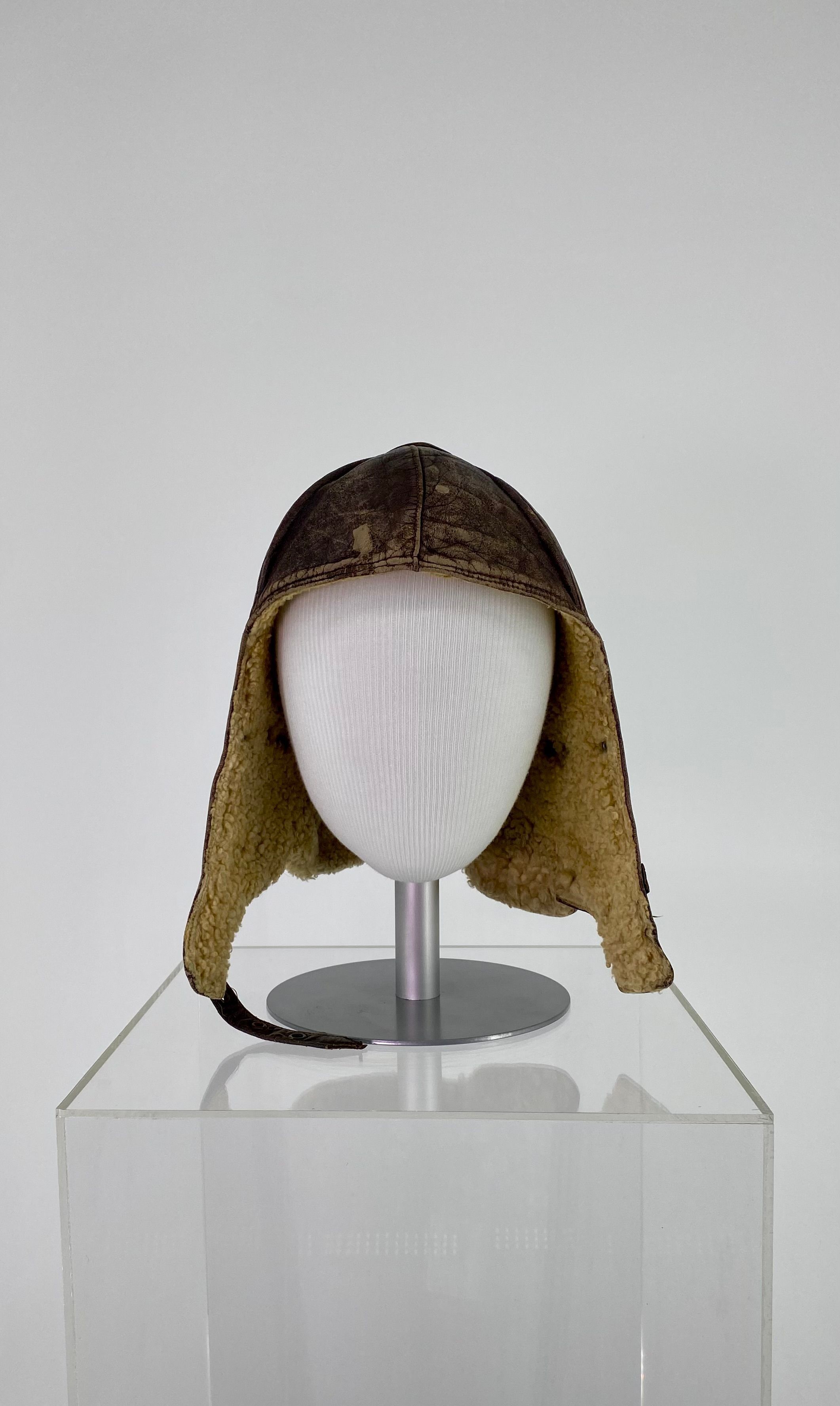Title
Navy Leather Winter Flight Suit Helmet
Description
Navy brown leather and wool lined flight helmet with a detachable buckled chin strap. Matched set with the flight suit jacket (2024.8.41) and the flight suit pants (2024.8.42).
Collection
William Calvin Grigsby, Jr. Collection
Context
Over a year after enlisting in the US Navy, Ensign William "Bill" Grigsby was authorized to fly on March 14, 1944. This approval finally came after both pre-flight school in Athens, Georgia, and flight school at Naval Air Station (NAS) in Pensacola, Florida. After a mission testing experimental G-suits with Air Group Five in Fallon, Nevada, Grigsby transferred to Air Group Twelve and entered the Pacific War.
As a member of Fighting-Bombing Squadron 12 assigned to the USS Randolph (CV-15), Ensign Grigsby's F6F Hellcat was among the first of 16 planes to launch an attack against Tokyo. Grigsby’s target, Tokyo's Haneda airport, was successfully bombed. His later missions included ground support at Iwo Jima, a second Tokyo raid, Okinawa ground support, and combat air patrol against kamikaze attacks.
Grigsby was demobilized as Lieutenant Junior Grade and discharged on November 5, 1945. His decorations include the Air Medal with clusters, the Distinguished Flying Cross, among other commendations.
From the Collection of William Grigsby.
As a member of Fighting-Bombing Squadron 12 assigned to the USS Randolph (CV-15), Ensign Grigsby's F6F Hellcat was among the first of 16 planes to launch an attack against Tokyo. Grigsby’s target, Tokyo's Haneda airport, was successfully bombed. His later missions included ground support at Iwo Jima, a second Tokyo raid, Okinawa ground support, and combat air patrol against kamikaze attacks.
Grigsby was demobilized as Lieutenant Junior Grade and discharged on November 5, 1945. His decorations include the Air Medal with clusters, the Distinguished Flying Cross, among other commendations.
From the Collection of William Grigsby.
Accession #
2024.8
